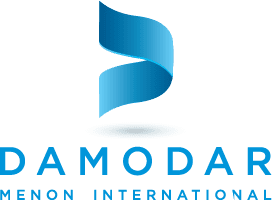Top textile companies in India are inclined to produce modal fabrics for their versatile characteristics and usability. In this blog, we will discuss modal fabric production and its impact on the environment.
What is Modal Fabric?
Modal, a semi-synthetic rayon fabric derived from beech tree pulp, closely resembles viscose in look and feel. Initially used for innerwear, sportswear, and bed linens, it has gained luxury status due to its exceptional softness and strength, often commanding a higher price than cotton or viscose. Fabric companies in India often blend Modal fiber with stronger fibers like cotton and spandex to enhance the durability of garments. Modal rayon fabrics can have a thread count as high as 300, making it a luxury material for international trading on the TEXchange Global marketplace.
Why Demand for Modal is Growing in the Consumer Marketplace?
Rayon viscose is one the popular fabrics in the garment and manufacturing sector. However, the emergence of modal fabric has led to a significant decline in worldwide viscose rayon production. Modal is typically more cost-effective to manufacture than viscose, and its production process involves fewer steps, resulting in a reduced environmental footprint for this fabric.
When it comes to environmental impact, modal is considered eco-friendlier than cotton. Its eco-friendliness compared to cotton lies in the fact that beech trees are more efficient in water usage, requiring only a fraction of the water consumed by cotton plants and thriving in less hospitable conditions.
However, it’s termed semi-synthetic because the manufacturing process involves treating the material with carbon disulfide and sodium hydroxide, introducing synthetic elements.
Lyocell is the main competitor for Modal in our consumer marketplace, which is a completely organic form of rayon.
While modal rayon is not innately sustainable or environmentally friendly, woven fabric manufacturers can make it sustainable under certain circumstances, like using organic chemicals and fertilizers.
How is Modal Fabric Produced?
The modal production process is an upgraded version of viscose rayon’s production process. It eliminates some of the harmful and wasteful aspects of viscose production, as you can see below:
Cellulose is Extracted from Trees: The harvested beech trees are broken down into small chips and then purified to extract their cellulose.
Cellulose Sheets are Steeped: The cellulose is transformed into sheets, which are then bathed in diluted caustic soda or sodium hydroxide (The concentration level is much lower than viscose rayon, which reduces the generation of toxic waste). This process is called steeping.
Crumbling: After steeping, the sheets are crumbled and directly immersed in carbon disulfide. Aging is skipped, unlike in the case of viscose. This process transforms the white crumbs into an orange-colored material called sodium cellulose xanthate.
Fibers are Created: The cellulose xanthate is dipped into caustic soda once again to develop a syrup-like solution. The solution is immediately passed through a spinneret to create modal fibers. The aging process is skipped again.
Yarn is Formed: In the final stage of the production process, the fibers are submerged in sulfuric acid, then stretched and molded into yarn.
Finishing: The yarn is washed, cleaned, bleached, dried, and arranged as spools to be sold to top textile companies in India. The ready-to-use yarns are further processed or treated for desired results, like UV protection, wrinkle resistance, or antibacterial coating, before it is woven into fabrics.
Why Woven Fabric Manufacturers are Choosing Modal for Garment and Apparel Creation?
Modal has gained much admiration among fashion designers and eco-conscious manufacturers in the fashion industry. It serves as a compelling alternative to cotton, offering eight key benefits:
- Flexible: Modal offers excellent flexibility and stretch, making it an excellent choice for sportswear.
- Absorbs Water Well: With the ability to absorb 50% more water than cotton, modal outfits are perfect for staying cool during hot summer days.
- Very Soft: Modal’s breathable and soft nature makes it suitable for both office wear and outdoor events.
- Perfect for Luxury Fabrics: Modal can be blended with other fibers to enhance strength and durability, making it a practical choice for affordable premium fabrics.
- Resists Pilling and Shrinking: Modal outfits are resistant to pilling and shrinking, ensuring long-lasting quality for everyday use.
- Holds Color Well: Modal dresses retain their dye and do not bleed during washing, thanks to their ability to absorb dye in warm water.
- Resists Wrinkling: Modal boasts a smooth texture and minimal creasing, requiring little ironing.
If you are looking for modal, viscose, and cotton fabric online in India, connect with our trading experts at Damodar Menon. We can help you get the best deals at the best price.
